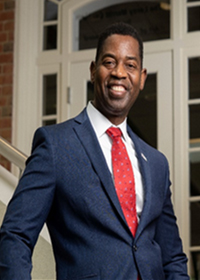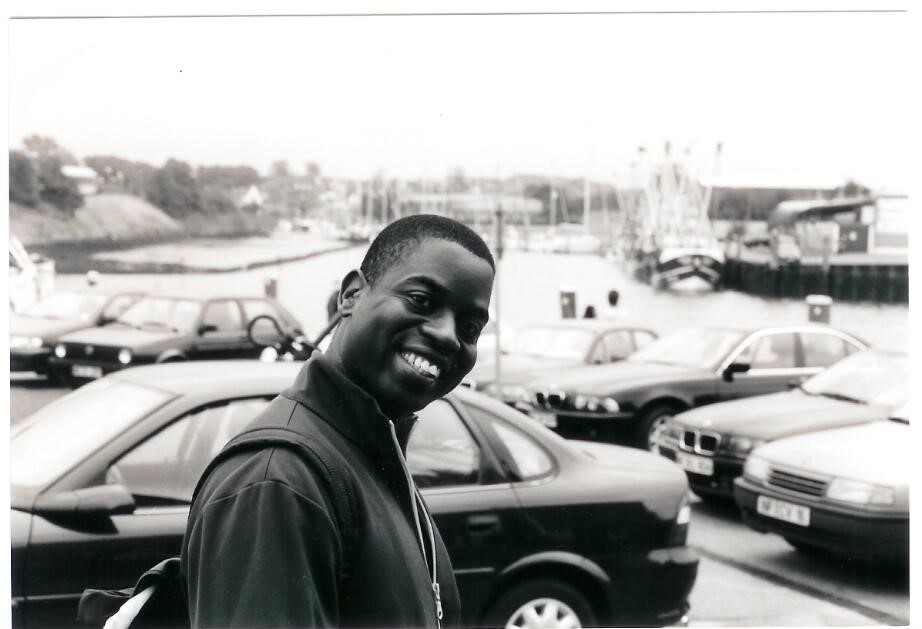Fulbright Chronicles, Volume 2, Number 2 (2023)
Author
Gregory W. Fowler
Abstract

My Fulbright experience was more about understanding people, in contrast to places. Humanity is a mass of contradictions, and while we are very much the same the world over, we are also different in ways that words cannot describe. My experiences challenged my assumptions about effective education, expanded my definition of “student-centered,” and encouraged me to hold people sacred rather than traditions. Today my Fulbright experience continues to inform my every discussion of policy or practice.
Keywords
reunification • Bologna Accords • education • student-centrism • competencies
When I look back on my Fulbright experiences, people come to mind first.
My first Fulbright, in 2002–2003, took me to Berlin as a Senior Lecturer at the John F. Kennedy Institute for North American Studies at Freie Universität. The second, in 2006, I served as a Senior Scholar in Brussels for the European Union. In both instances, the question of national and transnational identity was a central focus. What did it mean to be a citizen of either a newly reunified Germany or a rapidly expanding European Union?
Yeygeny Yevtushenko’s poem “People” is one of my favorites. It begins, “No people are uninteresting. Their fate is like the chronicle of planets.” Humanity is a mass of contradictions, and the truth is that we are very much the same the world over—and different in ways that words cannot describe, no matter the language.
There were several reasons why I chose Germany for my first Fulbright. My oldest brother was stationed in Germany while serving in the Army. I also had a nephew living in Germany. In addition, reunification efforts were underway. There were fascinating opportunities to research the impact of social constructs, particularly in Berlin where, just a decade earlier in 1989, the constructs of East German and West German as absolutes—a reality that had existed for a half century—had been wiped out almost overnight. I was eager to understand how societies change when the constructs that shape them collapse.
Post-9/11 events were playing out in real time amid debates about “just wars” and shifting post-Cold War alliances. Germany was deeply engaged in these discussions, even as it struggled to reconcile its new role as a power player in Europe with its determination to suppress militaristic tendencies.
Different Roles, Different Expectations
While in Germany, I taught international studies and literature to students from a variety of countries and at many different levels. Fascinating moments stand out. In one class, I asked students to identify the most important role of government. I was surprised when the class divided into two groups. One group, the Western European students, agreed that the role of government was to provide a social safety net. The other group, the Americans and Russians, insisted it was the role of government to keep their populations safe from external threats.
Predictably, emotions ran high. While attending a large dinner welcoming me to a university, I found myself in an animated exchange with a professor over whether the US would invade Iraq if weapons of mass destruction (WMD) were found. I didn’t propose the topic; everyone in Europe was talking about it. But what I took to be a purely academic discussion—after all, neither of us would be involved in the decision-making—was far greater to my colleague, who was so infuriated that he left before the main course. While I came from a large family where such dinner-table discussions were commonplace, he clearly experienced our exchange very differently, and it heightened my awareness of how interactions themselves, beyond simply a discussion of facts, require that you understand the effects they can have on people.
Given the geopolitical environment, I should not have been surprised when the US Department of State asked a few Fulbright scholars to join a speakers’ circuit to discuss American culture and listen to concerns from various populations around the country. This took me to places that were not on my original itinerary and introduced me to new and unexpected experiences.
We discussed Mark Twain, his experiences abroad, and the way different elements of American literature reflected American culture. We delved into African American literature from the 1930s and 1940s and how it, too, reflected American culture, perhaps differently. This also led to discussions on how issues, such as race, play out in higher education.
I was part of a cultural exchange, and not simply lecturing. Europeans were talking about many of the same things Americans were and facing similar challenges. Yet, they viewed these topics from different perspectives. For example, Americans seemed to support the Iraq war. Germans, however, were reticent to endorse the use of military force. In addition, there were protests across Europe.
In one city where racially motivated incidents were on the rise, I was assigned a bodyguard. In that same city, 20 or 30 people came together along with their families to host a Thanksgiving dinner for me, complete with turkey and pumpkin pie. Of course, it wasn’t a holiday for them, and I was touched by their kindness and the lengths to which they went to make me feel welcome.
Realities vs. Expectations
At the heart of everything were the students. Wherever I went, I was eager to hear their stories and understand how educational systems and policies affected the way they saw themselves and the world. How did the social support for housing and other necessities shape ambitions and expectations?
Given the cost of an American education, I was surprised to meet one student—of whom I grew quite fond—who had been taking classes for a decade and had no intention of stopping. Another group of students led protests opposing legislation that would have charged students $100 for their education.
When I served on the selection committees for German students who were applying to Fulbright to come to the US, I struggled to keep my face neutral as they voiced their expectations of American higher education and culture. Many had an unrealistic image of American wealth—no doubt based on American movies. To me, it seemed that they misunderstood the complexity of American lifestyles and culture, expecting all of the US to be like New York City. Even distances—and the ubiquity of American car culture—were new concepts. I had to explain that while one could drive from Berlin to Paris in eight hours, one could also start in California, drive eight hours … and still be in California. I wish I had the opportunity to interview those who came to the United States after they returned to hear how their perceptions might have shifted.
By the time my second Fulbright took me to Brussels, the discussion around higher education expanded as the European Union sought to establish common degree standards outlined in the Bologna Accords. For example, discussions were underway as to whether or not a teacher could say that x equals y in such a way that is transferable across borders. Could students going to school in France receive credit for this learning in Germany or England?
At the time, my own career brought me to Salt Lake City, Utah, where I was working with Western Governors University to define competencies across learning experiences and certify skill levels regardless of the learning path a student followed to acquire the skill.
My interactions with learners across Germany—with their disparate backgrounds, goals, and resources—had fundamentally shaped my reflection on what worked and what didn’t work for typical students. Among the things that I found increasingly clear was the way that a traditional, one-size-fits-all higher education model could perpetuate a class system and in fact de-democratize a population.
I was also acutely aware of how various EU countries were working to create pathways for articulation across different frameworks, and those discussions continued to inform the conversations I was having with community colleges, registrars, and academic colleagues about transfer credit policies. These conversations remain ongoing. We frequently confronted questions as to whether perceived differences in common courses or learning experiences were rooted in reality or rooted in ego. Were the differences between learning experiences real, or were they simply based upon accepted practices or traditions that people were hesitant to challenge?
Looking Through the Fulbright Lens
Looking back, I can see that the way I have approached many of the difficult questions I have confronted over the past quarter century was shaped by my time as a Fulbright Scholar
Looking back, I can see that the way I have approached many of the difficult questions I have confronted over the past quarter century was shaped by my time as a Fulbright scholar. My Fulbright challenged my assumptions about how education must be structured and helped to expand my definition of “student-centered” in terms of what students believe they are buying, rather than what we hope to sell or impose upon them. Instead of suggesting that we think outside the box when considering the role of education, those experiences pushed me to enlarge the box and embrace a greater willingness to hold people sacred rather than tradition.
I still carry with me the memory of those students who had been taking classes for more than a decade. I thought of them when I met octogenarians at a recent graduation who told me that it took them 50 years to earn their degrees. I carry with me the echoes of cultural and political debates from Berlin classrooms. I hear them resonate when I visit our Education Centers in more than 20 countries around the world. My Fulbright experience has taught me to reflect on our presence and purpose and what they represent.
When I join my colleagues in debating policy or practice, I bring to the conversation the insights I gained from European educators who had the courage to question curricular smokescreens as they struggled to reconcile systems that were centuries older than the United States.
The Fulbright Legacy
Today, I travel more than I ever dreamed I would when I stepped off the plane at Berlin’s Tegel airport all those years ago. Each time I land in a new location, I do so with the full benefit of the Fulbright experience. I feel that same sense of curiosity and excitement about engaging culturally and learning something new, coupled with the anticipation of meeting new people, hearing their stories, and further broadening my experience of the world.
Notes
- A podcast that delves into the definition of student-centered learning: https://plexuss.com/n/university-of-maryland-president-gregory-fowler-podcast
- More about the Bologna Accords and their impact on European higher education: https://education.ec.europa.eu/education-levels/higher-education/inclusive-and-connected-higher-education/bologna-process

Biography
Gregory W. Fowler, PhD, is president of University of Maryland Global Campus (UMGC), the largest provider of postsecondary education in Maryland and recently designated a minority-serving institution by the US Department of Education. At UMGC, he is leading a transformation that aligns the entire learning journey with the needs and expectations of nontraditional populations and the global workforce. Prior to joining UMGC in January 2021, Dr. Fowler served as president of Southern New Hampshire University (SNHU) Global Campus. He also held senior-level academic and administrative positions at Western Governors University (WGU) and Hesser College in New Hampshire. A two-time Fulbright Senior Scholar and a graduate of Morehouse College, Dr. Fowler holds master’s degrees from George Mason University and Western Governors University and a PhD from the State University of New York (SUNY) at Buffalo. He may be reached at gregory.fowler@umgc.edu
